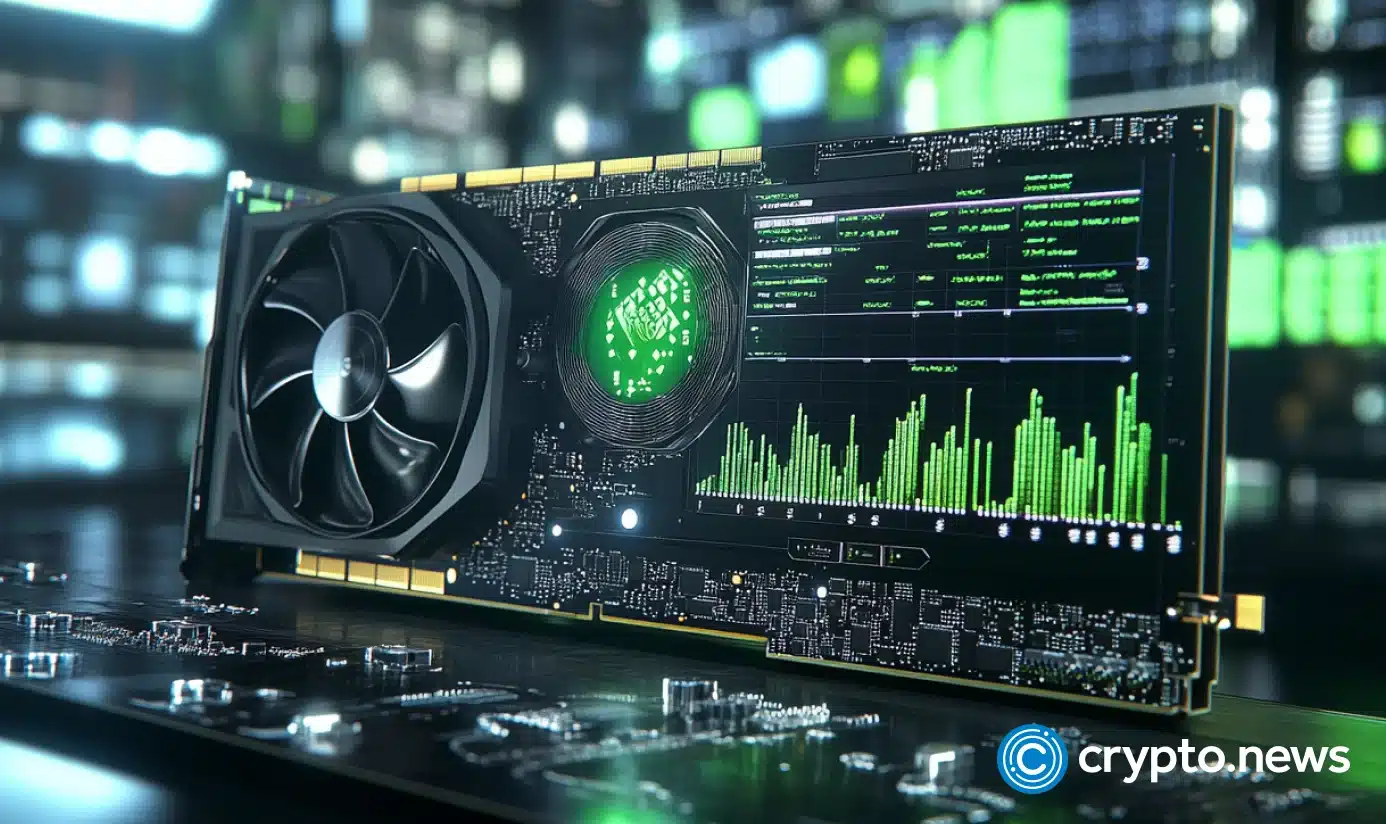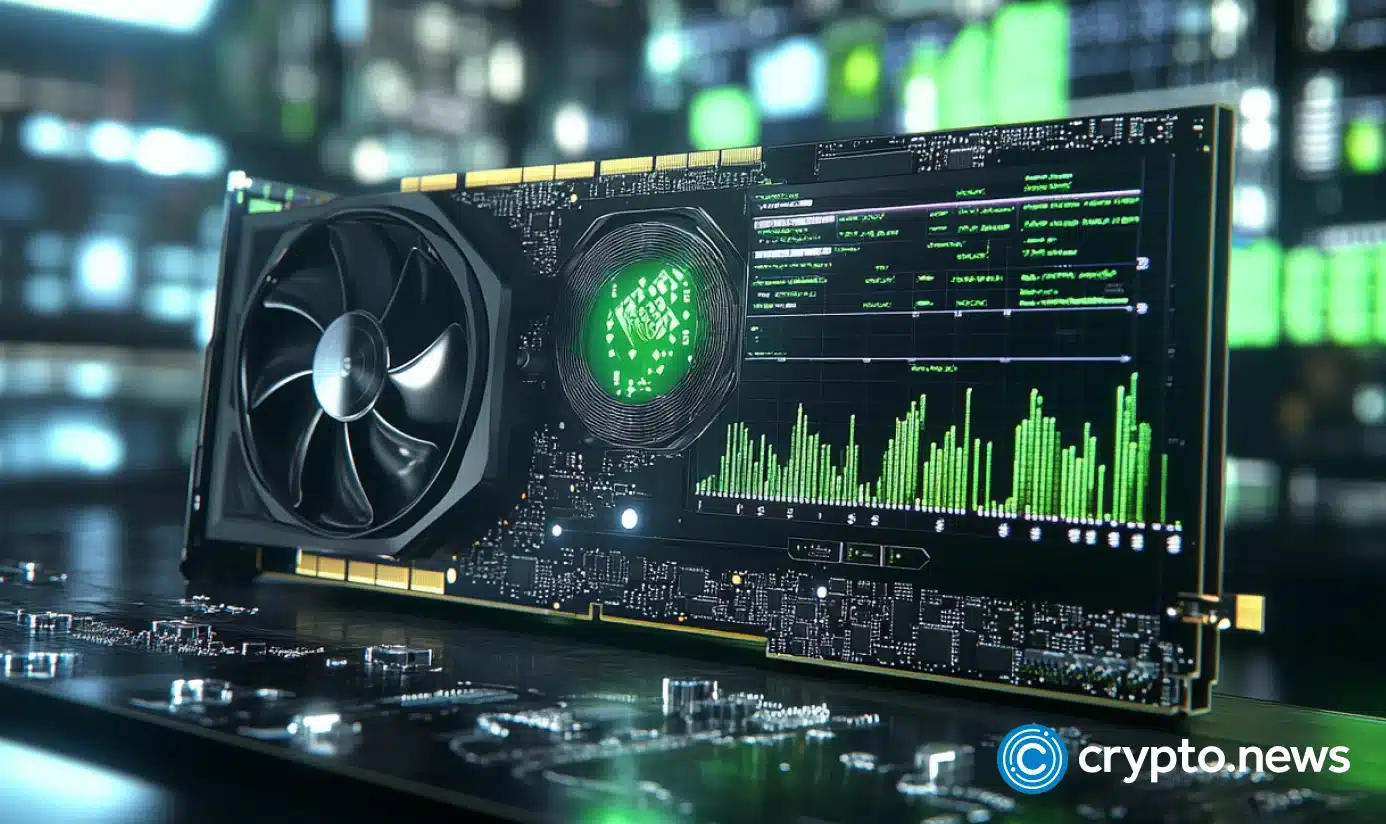AI tokens are dancing to NVIDIA’s beat — how long will the music last?

As analysts predict a near-doubling of NVIDIA’s revenue, how will this potential windfall affect AI-focused crypto tokens?
Table of Contents
NVIDIA (NVDA) has been the talk of the town, and for good reason. This tech giant, renowned for its powerful graphics cards and AI innovations, is set to unveil its second-quarter earnings for fiscal 2025 on Aug. 28.
NVIDIA has already delivered remarkable returns this year, with its stock price soaring over 173% year-to-date. As of Aug. 27, NVDA is trading at $127.81.
Analysts at FactSet project that NVIDIA’s revenue will nearly double, from $13.51 billion in Q2 fiscal year 2024 to $28.6 billion in Q2 fiscal year 2025.
Alongside this, earnings per share are expected to be a blockbuster, with analysts predicting 65 cents per share—a 141% increase from the previous year.
However, it hasn’t been all smooth sailing. Earlier this month, reports emerged suggesting that NVIDIA’s latest Blackwell AI platform might face delays due to design flaws, potentially pushing deliveries back by at least three months.
Despite this, key analysts, including those from Goldman Sachs and Loop Capital, remain optimistic, Yahoo Finance reported.
They cite the strong performance of NVIDIA’s existing Hopper platform and improved yields from TSMC, the company’s chip producer, as reasons for their confidence.
These analysts believe NVIDIA is still on track to meet or even exceed its Q2 expectations, with some speculating that the company might raise its guidance for Q3.
The big question now is, how will NVIDIA’s performance impact AI-crypto tokens, and what lies ahead for both the tech and crypto sectors? Let’s explore.
AI tokens surge on anticipation of strong Nvidia earnings
As anticipation builds for Nvidia’s Q2 earnings report, the excitement is spilling over into the crypto world, particularly among AI-focused tokens.
Over the past week, these tokens have seen remarkable gains, outpacing the broader crypto market as investors bet on a strong performance by the AI sector.
Leading the charge is the Artificial Superintelligence Alliance (FET) token, a project that unites Fetch.ai, Ocean Protocol, and SingularityNET. FET has surged nearly 50% in the last seven days, trading at $1.30 as of Aug. 27.
The rally has been so strong that even a whale investor, who had sold 2.33 million FET tokens between Aug. 11 and Aug. 23 at $1.02, seemingly regretted the decision.
This investor then bought back 1.79 million FET tokens at a higher price of $1.33, spending 2.385 million USDT, according to Look On Chain.
Another AI token on the rise is Render (RNDR), a decentralized GPU rendering network that allows creators to leverage idle GPU power for rendering digital content.
RNDR has also shown stellar performance, climbing over 36% in the last week and trading at $6.08 as of Aug. 27.
Meanwhile, NEAR Protocol (NEAR) has also joined the rally. NEAR’s native token surged nearly 20% over the last seven days, trading at $4.76 as of Aug. 27.
In tandem with these individual token gains, the combined market cap of AI-related crypto tokens surged from a 30-day low of $18.21 billion on Aug. 5 to $32.74 billion on Aug. 25 — a spike of approximately 80% — before settling at $30.72 billion as of Aug. 27.
The bullish momentum in the AI sector has clearly spilled over into AI-related crypto tokens. As investors anticipate strong results from NVIDIA, they are also positioning themselves in the crypto market, particularly in tokens tied to the AI industry. What happens next could set the tone for both the tech and crypto sectors in the coming months.
Funding floods into AI-crypto projects
It’s not just the prices of AI tokens that are soaring—funding for AI-crypto projects has also seen a colossal uptick, with large inflows pouring into ventures that blend artificial intelligence and blockchain technology.
One of the most notable examples is PIP Labs, the creators of Story Protocol, a layer 1 blockchain designed to tokenize intellectual property. This project aims to ensure that original creators are rewarded in the AI era, a concept that has resonated strongly with investors.
PIP Labs on Aug. 21 closed an $80 million Series B funding round, led by a16z crypto, which propelled their valuation to an impressive $2.25 billion.
Sahara Labs is another standout in the AI-crypto space. This startup is developing Sahara AI, a decentralized platform that promises to compensate AI contributors fairly. Their recent strategic funding round brought in $37 million, co-led by Pantera Capital and Polychain Capital.
Meanwhile, Sentient, a company co-founded by Polygon’s Sandeep Nailwal, made headlines on Jul. 2 by securing an $85 million mega seed round.
Adding to the wave of investment is Space and Time, a multi-purpose verifiable compute layer that operates at the intersection of AI and blockchain.
On Aug. 27, the company announced that it had secured $20 million in Series A funding to extend its market leadership led by VCs such as Framework Ventures, Lightspeed Faction, Arrington Capital, and Hivemind Capital.
This comes on the heels of a $20 million strategic funding round led by Microsoft’s M12 Ventures in September 2022.
Why AI-crypto is the new frontier
To fully grasp why AI-crypto projects are gaining momentum, it’s helpful to draw historical parallels, especially with the internet boom of the late 1990s and early 2000s.
Back then, the internet was transitioning from a niche technology to a global force. Companies that recognized its potential early—like Amazon and Google—grew into the giants of the digital era.
This transformation required massive investments in new infrastructure, such as data centers and content delivery networks, to unlock the Internet’s full potential.
We see a similar pattern today with AI. As AI advances, the demand for infrastructure capable of handling the vast data it generates and processes is skyrocketing.
NVIDIA is at the forefront of this trend, with their GPUs powering some of the most demanding AI applications, making them a key player in the ongoing AI expansion.
Moreover, as AI integrates deeper into various industries, the need for decentralized, secure systems—like those developed by AI-crypto startups—will continue to grow.
By merging the strengths of AI and blockchain, we’re creating a new class of intelligent digital assets that are secure, transparent, and capable of addressing real-world challenges.
As this trend continues, it’s clear that the future of crypto lies not just in digital currencies but in the intelligent systems that power them. This is a space to watch closely, as the possibilities are truly endless.
Disclosure: This article does not represent investment advice. The content and materials featured on this page are for educational purposes only.
